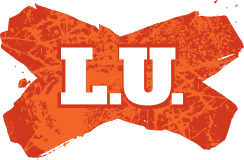blue bags
First Grade
- Messages
- 7,874
This footage is believed to be the oldest existing footage of rugby league in Australia.
It shows part of a game between the NZ Maori and NSW Seconds teams, played at the Sydney Cricket Ground on 5 June 1922. The Metropolis (Sydney) team had defeated the New Zealanders 77-13 two days beforehand. Organisers feared another landslide victory so decided to play the Seconds instead. Nevertheless, NSW won the game 23-14. New Zealand fared better the following weekend, beating Queensland 23-22 in a thrilling match.
Three legendary South Sydney players can be seen standing next to each other in this footage. First is winger Benny Wearing, with the pale shorts and sash around his waist (these were worn by some players to help stop the opposition grabbing them by the belt); on his right is centre and goal kicker, Oscar Quinlivan, and next to him, towering over everyone, is Alf 'Itchy' O'Connor. There is another Souths player, captain of the side Alf 'Smacker' Blair, holding the football, but the camera stops panning before it gets to him.
Visible in this footage is the early rule about how the ball is played after a tackle. At this time, a loose ruck is formed when a player is tackled, but with the players not really binding as they do in rugby union. Four years later, in 1926, the two-marker play-the-ball rule was introduced.
The footage also shows the NZ team performing a traditional haka before the match, which is now a feature of both international rugby league and rugby union competition. The Australian team by contrast look on somewhat bemused. New Zealand rugby league teams performed pre-match hakas as early as 1884 when a team visiting NSW gave what a Sydney newspaper described as a ‘Maori war cry’. According to the paper, ‘The NSW men declared it was hardly fair of the visitors to frighten them out of their wits before the game began’. By the 1922 and 1923 tours, however, the haka was an expected part of the proceedings.
The haka (‘ha’ meaning breath and ‘ka’ meaning fire) is a traditional Maori dance accompanied by a chant and in rugby league games, as seen here, it is used by NZ teams to motivate both players and supporters and to intimidate the opposition. The haka is a complex dance that uses the hands, feet, legs, body, voice, tongue and eyes, with each action conveying a meaning. There are different types of hakas, ranging from a welcome to a war dance.
https://www.nfsa.gov.au/collection/curated/rugby-league
It shows part of a game between the NZ Maori and NSW Seconds teams, played at the Sydney Cricket Ground on 5 June 1922. The Metropolis (Sydney) team had defeated the New Zealanders 77-13 two days beforehand. Organisers feared another landslide victory so decided to play the Seconds instead. Nevertheless, NSW won the game 23-14. New Zealand fared better the following weekend, beating Queensland 23-22 in a thrilling match.
Three legendary South Sydney players can be seen standing next to each other in this footage. First is winger Benny Wearing, with the pale shorts and sash around his waist (these were worn by some players to help stop the opposition grabbing them by the belt); on his right is centre and goal kicker, Oscar Quinlivan, and next to him, towering over everyone, is Alf 'Itchy' O'Connor. There is another Souths player, captain of the side Alf 'Smacker' Blair, holding the football, but the camera stops panning before it gets to him.
Visible in this footage is the early rule about how the ball is played after a tackle. At this time, a loose ruck is formed when a player is tackled, but with the players not really binding as they do in rugby union. Four years later, in 1926, the two-marker play-the-ball rule was introduced.
The footage also shows the NZ team performing a traditional haka before the match, which is now a feature of both international rugby league and rugby union competition. The Australian team by contrast look on somewhat bemused. New Zealand rugby league teams performed pre-match hakas as early as 1884 when a team visiting NSW gave what a Sydney newspaper described as a ‘Maori war cry’. According to the paper, ‘The NSW men declared it was hardly fair of the visitors to frighten them out of their wits before the game began’. By the 1922 and 1923 tours, however, the haka was an expected part of the proceedings.
The haka (‘ha’ meaning breath and ‘ka’ meaning fire) is a traditional Maori dance accompanied by a chant and in rugby league games, as seen here, it is used by NZ teams to motivate both players and supporters and to intimidate the opposition. The haka is a complex dance that uses the hands, feet, legs, body, voice, tongue and eyes, with each action conveying a meaning. There are different types of hakas, ranging from a welcome to a war dance.
https://www.nfsa.gov.au/collection/curated/rugby-league
